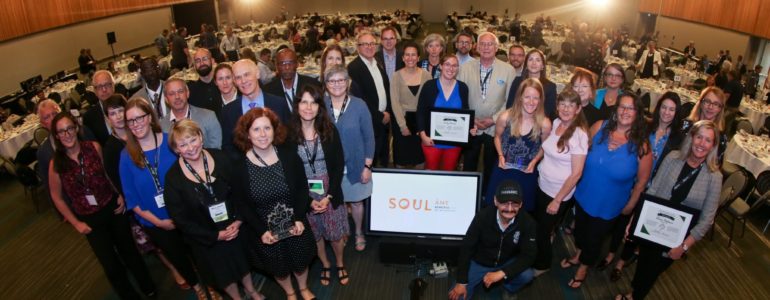
CIP and Music Cities
The Canadian Institute of Planners 2018 National Conference entitled SOUL was held in Winnipeg, Manitoba, Canada in July 2018.
CIP’s annual conference is aimed at developing professional planning skills and providing information on best practices for city-building. The 2018 program challenged participants to reflect on what “soul” means for community planning. In particular, planners were asked, “how does culture, environments, and stories shape the spaces around us”.
Christina Heydorn delivered a presentation entitled “Notes from a Music City: Actions to Protect and Grow Toronto’s Music Industry”.
Music is in Toronto’s SOUL! Music is a form of celebration that has the power to build bridges and unites communities. It adds vibrancy to urban areas, celebrates diversity, and increases livability. The music industry plays an important role in the creative and cultural sector; it provides employment; pays taxes; and generates spending while contributing to the social and cultural fabric.
Toronto is one of the most varied and vibrant music cities in the world. Its 250 live music venues range in size from small DIY spaces to huge arenas. Toronto’s music scene serves residents, attracts visitors, employs artists, and engages with other cultural industries such as film, television, fashion, food, and interactive media.
Development pressures are creating risks for live music venues in Toronto through displacement. Increasing land values, encroaching neighbours, and a regulatory framework in need of review are impacting businesses’ bottom line and owners’ patience. To ensure the continued success of the music industry, the City of Toronto must balance the impacts of development with the needs of businesses.
Ms. Heydorn and her colleagues will described the actions that have been taken by planners, economic development specialists, and the private sector to protect and support Toronto’s music industry assets. This included a discussion about:
- Identifying and analyzing the importance of cultural industries in a complete and sustainable community;
- Identifying how, why and when the music and urban planning ecosystems intersect;
- Identifying cultural industries within one’s own community and considering threats; and
- Linking threats to opportunities to protect and promote cultural industries through:
- Planning and development process (internal and external);
- City-wide planning policy;
- Sub-area planning policy;
- Zoning;
- Noise by-laws; and,
- Incentives.

